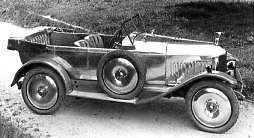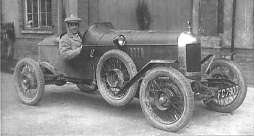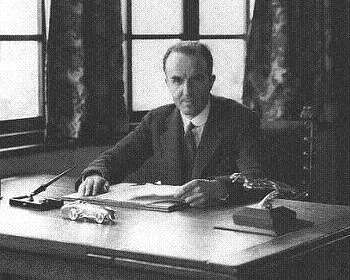The MGA With An Attitude
M.G.s Through The Ages -- HS-105-Intro
Prior to 1900 most automobiles were four-seat touring cars with large capacity engines, hand built one at a time and quite expensive. Around 1900 the term "Sports Car" came to mean an upgraded version of the standard car with better performance and improved comfort, what we might now call a GT or Grand Touring car. These were even more expensive, perhaps twice the cost of the standard model it was based on. Very few people could afford one, so very few were built, usually done one at a time on custom order.
About 1902 the term "Racing Car" came to mean a car that was stripped down to the bare minimum of mechanical components and had the original touring body replaced with a lighter two seater body. Again being hand built on special order, these could also be as expensive or more expensive than the standard model. Still very few people could afford to buy an automobile of any type.
Henry Ford realized that motor cars could only be popular if they were affordable to a large group of buyers. This is when he began producing the Ford Model T as a very basic car, one standard model to be built in large quantities for reduced sales price. The car was of course a big success.

Morris Sports Cowley, 1921
|
William Morris was to follow this model and began producing small and relatively inexpensive cars just before the Great War. In 1921 Morris Motors produced a two-seater Sports Cowley. Unfortunately it had almost no aesthetic appeal, rode high from the ground and was, to be honest, downright ugly, so it did not sell well, causing Morris to believe that small sports cars were not worth producing. While multiple manufacturers were trying to build cheap "cycle-cars", Herbert Austin nearly put them out of business when he produced the Austin Seven. which was cheap enough for many people to buy.
While Morris Motors was the manufacturing company, Morris Garages was a separate business formed to sell and service the cars, what we now call a car dealer. In addition to the standard Morris cars, Morris Garages also supplied a range of supplementary equipment, what we now call "accessories". The upgraded and accessorized Morris cars appealed to those who could not afford more expensive cars, but appreciated the special touches.
By 1924 Morris Garages was offering a range of special bodies to be fitted to the standard chassis. Cecil Kimber came to the company in 1921 as Sales Manager and became General Manager in 1923. The enthusiastic Cecil was the driving force behind production of special bodied cars with performance upgrades, and would ultimately be recognized as the father of MG cars. The workshop foreman Cecil Cousins was expert at tuning cars for improved performance. Cecil Kimber believed the small Cowley Sports was not a bad idea but simply lacked appeal, so he got approval to produce the Chummy which had a truncated open body with small back seat produced by Raworth of Oxford, to be mounted on a Cowley chassis. Today we call this a 2+2. This car featured lowered suspension, leather trim, and lighter paint colors, and it sold in profitable small quantities through 1923. Two of these cars earned gold medals in the Lands End Trial.
Early in 1924 Cecil ordered six of the special two-seat bodies to be mounted on Cowley chassis, to be market as the MG Super Sports Morris. At about twice the price of the standard car it took a long time to sell the six cars, but it got the company moving into the sporting car market. Later in 1924 one of the Morris Garages employees, Jack Gardiner, took some sketches
| |

14/28 MG Super Sports Morris Oxford
|
for a special car body to Kimber, and together they had a sidecar building company Hughs of Birmingham build the body to be installed on a modified Oxford chassis. This was a very attractive car, resulting in more orders to give the MG marque a good push-off, and was marketed as the MG Super Sports Morris Oxford. It was the first real production car of the new MG Car Company.
In late 1924 the company began construction of a very special car
| |

Old Number One, 1925
|
based on Morris components but nothing like any other Morris model, featuring an overhead valve engine. We now know this car as Old Number One, regarded by Cecil Kimber as the first true MG sports car. It was finally on the road in April 1925, after the 14/28 was out of production. Even then these cars were mildly re-tuned production cars.
In 1927 the special car production operation was moved into its own factory facility at Edmund Road, Cowley, as a separate company, The M.G. Car Company (W.R.M. Morris, proprietor), and Cecil Kimber worked to establish MG as a separate marque. See the following pages to trace the years and car models of MG Car Company.
|



